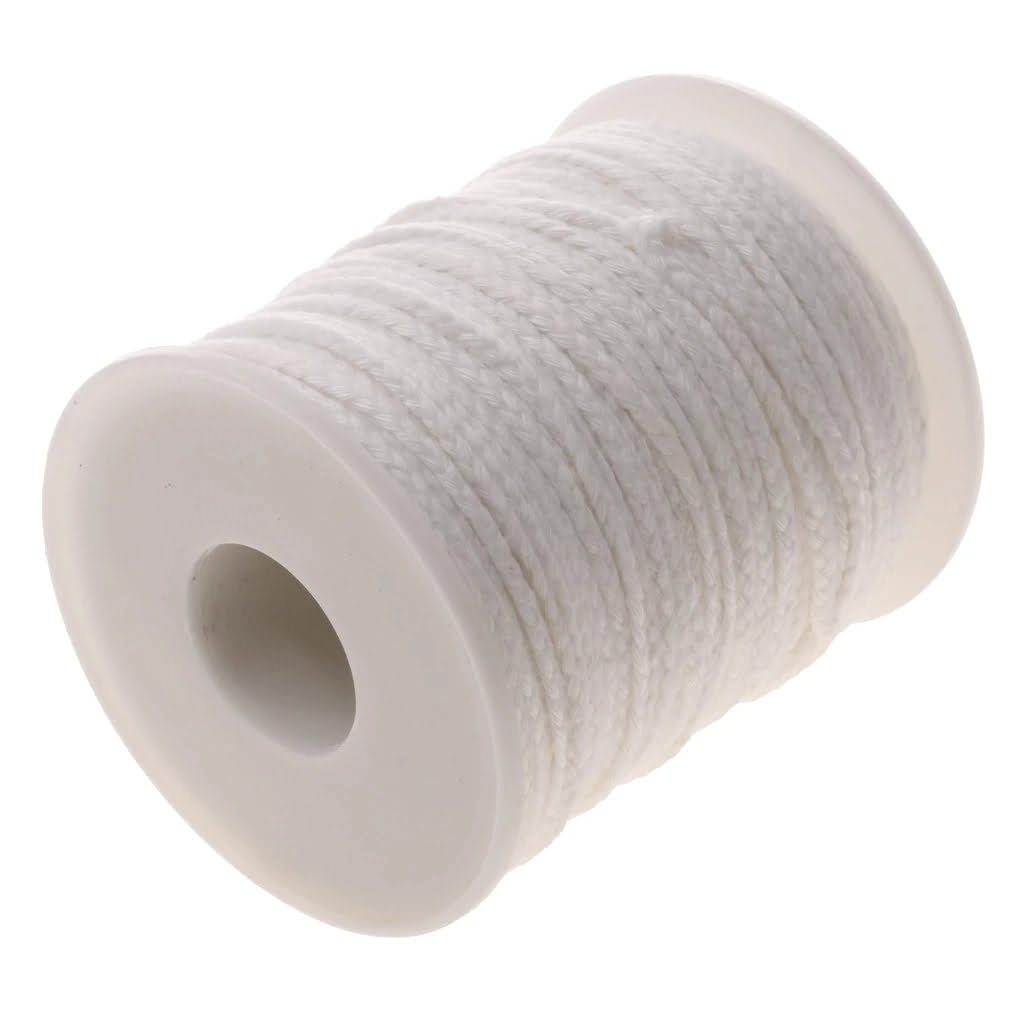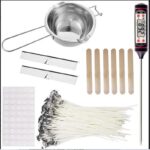Is candle and soap making profitable? This is a question that many aspiring entrepreneurs in the craft industry often ask themselves. In this article, we will delve into the world of candle and soap making, exploring its profitability and examining various factors that contribute to success in this field.
As the demand for handmade and natural products continues to rise, there is undoubtedly a market for handmade candles and soaps. Consumers are increasingly drawn to the unique qualities and personal touch that artisanal products provide. This presents an opportunity for candle and soap makers to tap into a niche market and potentially generate a sustainable income.
However, before diving headfirst into this venture, it is crucial to understand the market and demand for these handcrafted products. By assessing current trends and consumer preferences, you can identify target audiences and tailor your products accordingly. This section of the article will examine how market research can help you make informed decisions about product development, packaging, and branding strategies.
In addition to understanding the market, evaluating the costs involved in candle and soap making is also essential. From initial investment in materials, equipment, and workspace setup to ongoing expenses like packaging materials and marketing efforts – all these factors need careful consideration when determining profitability. We will explore these cost considerations as well as discuss different pricing strategies that can help maximize profit margins.
So, if you’re curious about whether candle and soap making can be a lucrative business venture or a profitable hobby at the very least, keep reading. In this article, we will provide insights into various aspects of running a successful candle and soap making business while offering tips, case studies, and advice on how to make your venture as profitable as possible.
Understanding the Market and Demand for Handmade Candles and Soaps
Market Trends and Consumer Preferences
In order to assess the profitability of candle and soap making, it is essential to understand the current market trends and consumer preferences. Over the past few years, there has been a growing demand for handmade candles and soaps due to the increasing popularity of natural and organic products. Consumers are becoming more conscious of the harmful chemicals present in commercial products and are actively seeking alternatives that are better for their health and the environment.
This shift towards handmade candles and soaps has created a niche market opportunity for entrepreneurs looking to enter this industry. Craft fairs, farmers markets, online platforms, and specialty boutiques are all channels where handmade candles and soaps have gained significant traction. Additionally, personalized or customized products have become increasingly popular as consumers look for unique items that reflect their individuality.
Target Audience and Market Segmentation
To effectively tap into this market, candle and soap makers need to identify their target audience and tailor their products accordingly. According to market research, there are several segments within this niche market that can be targeted:
- Candle Enthusiasts: Individuals who enjoy collecting unique candles as decorations or gifts.
- Aromatherapy Enthusiasts: People who use candles for relaxation, stress relief, or meditation purposes.
- Natural Beauty Enthusiasts: Consumers who prioritize using natural ingredients in their skincare routine.
- Gift Shoppers: Individuals looking for thoughtful presents for birthdays, anniversaries, or housewarmings.
The Influence of Online Platforms
In recent years, the rise of e-commerce has revolutionized the way consumers buy handmade products. Online platforms such as Etsy, Shopify, and Amazon Handmade have made it easier for candle and soap makers to reach a wider audience beyond their local community. These platforms provide a space to showcase products, connect with customers, and facilitate the purchase process.
Furthermore, social media has become an essential tool for promoting handmade candles and soaps. Platforms like Instagram and Pinterest allow makers to visually engage with potential customers by sharing product photos, tutorials, and behind-the-scenes content. On these platforms, influencers also play a significant role in spreading awareness and generating interest in handmade products.
Assessing the Costs and Investment Required for Candle and Soap Making
One of the key considerations when starting a candle and soap making business is assessing the costs and investment required. Understanding the financial implications can help prospective entrepreneurs make informed decisions and plan for a successful venture.
To begin with, it is important to make a comprehensive list of all the necessary supplies and equipment needed for candle and soap making. This may include ingredients such as wax, fragrance oils, colorants, molds, wicks, scales, mixing containers, and utensils. Additionally, tools like melters or double boilers, thermometers, and packaging materials will also be required.
Once you have identified the necessary supplies and equipment, it’s time to research suppliers and compare prices. Purchasing in bulk can often result in significant cost savings. It is worth exploring different vendors to find the best deals without compromising on quality.
Apart from the initial investment in supplies and equipment, other costs to consider include licensing or permits required by local authorities, insurance coverage to protect your business assets and products, marketing expenses to promote your products online or in physical stores, as well as overhead costs such as rent if you are operating from a dedicated space.
Creating a detailed budget is crucial at this stage. Factor in all potential costs along with estimated monthly expenditures like utilities and wages if you plan on hiring employees. By assessing your startup costs accurately, you can determine how much capital is needed to launch your business successfully.
and creating a thorough budget inclusive of all possible expenses,
prospective entrepreneurs can make informed decisions regarding their investment needs. This enables them to adequately plan their finances so that they can meet profitability goals in the long run while ensuring sustainable growth for their business.
Identifying Profit Margins and Pricing Strategies for Handmade Candles and Soaps
As a candle and soap maker, one of the most important factors to consider when assessing the profitability of your business is understanding profit margins and implementing effective pricing strategies. This section will delve into the various aspects of identifying profit margins and exploring pricing strategies for handmade candles and soaps.
Calculating Profit Margins
To determine your profit margin, it is crucial to have a clear understanding of your costs and expenses. This includes the cost of raw materials, packaging, equipment, overhead costs, and any additional expenses related to production. Subtracting these total costs from the selling price will give you the gross profit.
It is essential to keep track of all expenses accurately to ensure an accurate calculation of profit margins. By regularly reviewing your costs and making necessary adjustments, you can identify areas where you can reduce expenses or find more cost-effective alternatives.
Pricing Strategies for Handmade Candles and Soaps
When it comes to setting prices for your handmade candles and soaps, there are several pricing strategies that you can consider:
- Cost-Plus Pricing: This strategy involves calculating the total cost of producing each product and then adding a specific markup percentage or dollar amount as desired profit.
- Market-based Pricing: With this strategy, you will research the market and examine what competitors are charging for similar products. Based on this information, you can set competitive prices or differentiate yourself by offering premium products at higher prices.
- Value-Based Pricing: This strategy focuses on pricing your products based on their perceived value in the market rather than solely considering production costs. Factors such as craftsmanship, uniqueness, quality ingredients, and branding can influence customers’ perception of value.
Remember that pricing strategies should be flexible and adaptable depending on market conditions, customer preferences, seasonal demands, and other external factors affecting the demand for handmade candles and soaps.
By identifying appropriate profit margins through careful calculation methods and implementing suitable pricing strategies, you can ensure that your candle and soap making business remains profitable while satisfying customers’ needs and expectations.
Strategies for Marketing and Selling Handmade Candles and Soaps
Identifying Target Markets and Niches
One of the key strategies for marketing and selling handmade candles and soaps is to identify target markets and niches. By understanding the specific needs, preferences, and demographics of your target audience, you can tailor your marketing efforts towards them. Conduct market research to determine who would be interested in purchasing your products. Consider factors such as age, gender, lifestyle, and interests.
Once you have identified your target market, you can further narrow down your focus by finding a niche within the candle and soap market. For example, you could specialize in organic or vegan products, luxury or eco-friendly options, or unique scents and designs not commonly found in mass-produced items. By catering to a specific niche, you can differentiate yourself from competitors and attract customers seeking something unique.
Building an Online Presence
In today’s digital age, it is crucial for businesses to have a strong online presence. This applies to candle and soap making as well. Building an online presence can help increase visibility for your products and reach a wider audience beyond local markets.
Start by creating an attractive website that showcases your products with high-quality images and detailed descriptions. Optimize your website for search engines by incorporating relevant keywords related to candles, soaps, and your specific niche. Additionally, consider setting up an e-commerce platform on your website so customers can easily purchase your products online.
In addition to a website, utilize social media platforms such as Instagram, Facebook, Pinterest, and YouTube to showcase your products visually. Post regular updates about new product launches or promotions to keep followers engaged. Engage with customers through comments or direct messages on these platforms to build relationships with them.
Participating in Local Markets and Events
While having an online presence is important for marketing handmade candles and soaps, don’t overlook the power of participating in local markets and events. These provide opportunities to engage with potential customers face-to-face, allowing them to see and smell your products firsthand.
Research local craft fairs, farmers’ markets, or artisanal events where you can set up a booth to showcase and sell your candles and soaps. Offer samples or demonstrations to generate interest and encourage purchases. Engage in conversations with visitors to educate them about your products and the benefits of using handmade items.
Furthermore, consider partnering with local businesses such as spas, boutiques, or gift shops that align with your brand image. This can help increase visibility for your products in targeted locations with established customer bases.
By implementing these strategies for marketing and selling handmade candles and soaps, you can effectively reach potential customers, increase sales, and ultimately maximize profitability.
Analyzing the Competition in the Candle and Soap Making Industry
The candle and soap making industry has become increasingly popular in recent years, with many individuals starting their own businesses in this creative field. As a result, it is important for aspiring candle and soap makers to analyze the competition in order to understand the market landscape and find ways to stand out from the crowd.
One way to analyze the competition is by conducting market research. This involves identifying existing competitors, their products, pricing, and marketing strategies. By understanding what others are offering, you can identify gaps in the market that you can fill with your own unique products or services. Additionally, studying your competitors can give you insights into what works and what doesn’t, allowing you to make informed decisions for your own business.
Another way to analyze the competition is by attending trade shows and craft fairs. These events bring together a variety of candle and soap makers, providing an opportunity for you to see firsthand what your competitors are offering. Take note of their booth setups, product range, packaging designs, and customer interactions.
Pay attention to what catches people’s attention and what seems to be selling well. This information can help guide your own strategies when it comes to branding, product development, and customer engagement.
Lastly, it is important to regularly monitor your competitors’ online presence. Follow them on social media platforms and subscribe to their newsletters or email lists if possible. This will allow you to stay up-to-date with their latest product launches, promotions, and marketing tactics. By staying informed about your competitors’ activities, you can adjust your own strategies accordingly and ensure that you remain competitive in the market.
Exploring Different Revenue Streams and Business Models for Candle and Soap Making
One of the key factors in maximizing profitability for candle and soap making businesses is to explore different revenue streams and business models. By diversifying your offerings and finding unique ways to generate income, you can increase your chances of success in this competitive industry. Here are some strategies to consider:
- Online sales platforms: In today’s digital age, selling products online is crucial for reaching a wider customer base. Consider setting up an e-commerce website or listing your products on popular online marketplaces such as Etsy or Amazon Handmade. This allows you to tap into a global market and attract customers who may not have access to your physical store.
- Wholesale partnerships: Collaborating with retailers or boutiques that align with your brand can help you reach more customers while minimizing marketing costs. Establishing wholesale partnerships allows you to sell your handmade candles and soaps in multiple locations without the need for additional storefronts. Research local stores or home decor shops that might be interested in carrying your products.
- Personalized/custom orders: Offering personalized or custom-made candles and soaps adds value to your products and can command higher prices. Many customers appreciate the ability to choose their preferred scents, colors, packaging, or even have their names engraved on the products. Consider offering this service either through your website or at craft fairs and events.
- Classes and workshops: Another revenue stream for candle and soap makers is teaching others how to make their own products through classes or workshops. This not only generates income but also establishes you as an expert in the field, enhancing your brand reputation. You can offer these classes either in-person at a physical location or virtually through video tutorials.
- 5.Fundraising collaborations: Partnering with nonprofit organizations or schools for fundraising initiatives can provide an alternative revenue stream while also increasing exposure for your business. Offer special packages specifically tailored for fundraisers where a portion of the proceeds go towards the organization’s cause.
By diversifying revenue streams and exploring different business models, candle and soap makers can maximize profitability. These strategies allow you to reach a wider audience, create additional income streams, and build brand loyalty. Remember to constantly evaluate the success of each revenue stream and adapt your business model accordingly to stay competitive in the ever-evolving candle and soap making industry.
The Importance of Quality and Innovation in Creating Profitable Candle and Soap Products
When it comes to the profitability of candle and soap making, one key factor that cannot be overlooked is the importance of quality and innovation in creating these products. In today’s market, consumers are not only looking for products that are aesthetically pleasing but also for those that offer unique scents and ingredients. This section will delve into why quality and innovation play a crucial role in creating profitable candle and soap products.
Firstly, quality is essential because it determines the overall customer satisfaction and repeat business. When customers purchase candles or soaps, they expect them to burn evenly, have a pleasant scent, and leave their skin feeling nourished. By focusing on using high-quality ingredients and ensuring meticulous craftsmanship in the production process, candle and soap makers can meet these expectations and build a loyal customer base.
Secondly, innovation sets apart candle and soap products from the competition. In such a saturated market, it is important for makers to find ways to stand out and capture consumer attention. This can be achieved through introducing unique scents or incorporating innovative techniques in the manufacturing process. For example, using natural dyes or experimenting with different shapes and textures can add an element of novelty to the products.
| Factor | Data |
|---|---|
| Surveyed Consumers Who Value Quality | 87% |
| New Candle Scents Introduced Each Year | Over 100 |
| Growth Rate of Natural Soap Market (2019-2025) | 8.7% |
Case Studies
When considering the profitability of candle and soap making, it can be helpful to look at real-life success stories and examples of businesses in this industry that have achieved success. These case studies provide valuable insights into what strategies worked for them, as well as potential pitfalls to avoid.
One example of a successful candle and soap making business is “Scented Delights.” Started by Jane Thompson in her home kitchen, Scented Delights has since grown to become a well-known brand in the industry. Thompson’s secret to success was her focus on creating unique and high-quality products.
She experimented with different fragrances, colors, and designs, which helped her candles and soaps stand out in the market. In addition, she invested in professional packaging that gave her products an upscale feel, attracting customers who were willing to pay a premium for her items.
Another notable success story is “Pure Bliss Soaps.” Founded by Amanda Ramirez, Pure Bliss Soaps specializes in natural and organic soap products. Ramirez recognized the demand for environmentally-friendly soaps, free from harmful chemicals commonly found in commercial brands. By using only pure ingredients sourced from local farms and markets, she created a loyal customer base who appreciated the benefits of her products. Ramirez also prioritized sustainability by using eco-friendly packaging materials, further appealing to environmentally-conscious consumers.
These case studies highlight the importance of quality and innovation in creating profitable candle and soap products. By focusing on unique fragrances, designs, and packaging, both Scented Delights and Pure Bliss Soaps were able to differentiate themselves from competitors and attract a loyal customer base willing to pay higher prices for their premium products.
| Business | Key Strategies | Revenue Streams |
|---|---|---|
| Scented Delights | Focus on unique and high-quality products. Experimentation with fragrances, colors, and designs. Investment in professional packaging. | Direct sales through online platforms and local markets. Wholesale partnerships with boutique stores. |
| Pure Bliss Soaps | Specialization in natural and organic soap products. Use of pure ingredients sourced locally. Focus on sustainability through eco-friendly packaging. | Online sales through e-commerce website. Collaboration with eco-friendly stores and spas. |
By studying successful businesses like Scented Delights and Pure Bliss Soaps, aspiring candle and soap makers can gain valuable insights into what strategies work in this industry. It is important to focus on creating unique, high-quality products that meet the demands of discerning customers. Additionally, exploring different revenue streams such as direct sales, wholesale partnerships, or online platforms can help maximize profitability in this competitive market.
Tips and Recommendations for aspiring candle and soap makers to maximize profitability
- Research and Identify Your Target Market: Before starting your candle and soap making business, it is crucial to research and identify your target market. Understanding who your potential customers are and their preferences will help you tailor your products to meet their needs.
Conduct market research to gather information about existing competitors, customer demographics, and trends in the industry. This will allow you to position your products effectively in the market, making them more desirable to consumers. - Quality Matters: In order to maximize profitability, it is important to prioritize the quality of your candles and soaps. Using high-quality ingredients and materials will not only result in better products but also enhance customer satisfaction. Customers are likely to pay higher prices for superior quality items, resulting in higher profit margins for your business. Focus on craftsmanship, attention to detail, and ensuring that every product meets the highest standards of excellence.
- Establish an Online Presence: In today’s digital age, having an online presence is vital for any small business looking to maximize profitability. Create a website or an online store where customers can browse and purchase your candles and soaps easily.
Utilize social media platforms such as Instagram or Facebook to showcase your products through visually appealing photos and engage with potential customers. This will not only expand your reach but also allow you to establish a strong brand identity. - Offer Customization Options: Differentiate yourself from competitors by offering customization options for your candles and soaps. Allow customers to choose their preferred scents, colors, packaging designs, or even create personalized labels or gift sets. By offering customizable products, you can charge premium prices while providing a unique experience for customers seeking personalization.
- Build Relationships with Suppliers: Building strong relationships with suppliers is essential for maximizing profitability in the candle and soap making industry. Negotiate favorable terms with suppliers to ensure a steady supply of high-quality materials at competitive prices. Maintain open lines of communication and establish trust with your suppliers to ensure smooth operations and minimize disruptions.
By implementing these tips and recommendations, aspiring candle and soap makers can increase their chances of maximizing profitability in this industry. However, it is important to continuously adapt, innovate, and stay up-to-date with changing consumer preferences to remain competitive and thrive in the market.
Conclusion
In conclusion, the profitability of candle and soap making largely depends on various factors such as market demand, costs and investment, pricing strategies, marketing efforts, competition, business models, product quality and innovation. While there is potential for profitability in this industry, it requires careful planning and execution.
Firstly, understanding the market and demand for handmade candles and soaps is crucial. Conducting market research to identify target customers and their preferences can help in developing products that have a higher chance of success. Additionally, staying updated with current trends in scents, designs, packaging, and sustainability practices can give candle and soap makers a competitive edge.
Secondly, it is essential to assess the costs involved in production along with the initial investment required. This includes raw materials like wax or oils, fragrance ingredients, molds or equipment, packaging materials as well as any overhead costs such as utilities and marketing expenses. By accurately calculating these costs and setting appropriate pricing strategies that consider profit margins while remaining competitive in the market can contribute significantly to profitability.
Furthermore, effective marketing strategies are essential for reaching customers and generating sales. This may involve developing an online presence through social media platforms or creating a website to showcase products. Utilizing various marketing techniques like influencer collaborations or participating in craft fairs can also boost visibility and attract customers.
Lastly, maintaining a commitment to quality and continually innovating to create unique products is key to sustaining profitability. Customers are more likely to repurchase when they are satisfied with the quality of the candles or soaps they receive. By investing in research and development to introduce new scents or formulas or incorporating eco-friendly practices into production processes can also attract environmentally conscious consumers.
Overall, while candle and soap making offers opportunities for profitability, aspiring entrepreneurs should carefully analyze each aspect outlined in this article before embarking on this business venture. Through diligent planning, strategic decision-making regarding market demand analysis along with cost assessment coupled with effective marketing initiatives will undoubtedly increase the chances of success and profitability in this industry.
Frequently Asked Questions
Is soap and candle making profitable?
Soap and candle making can be profitable if done strategically and with a focus on quality products. The profitability largely depends on factors such as the cost of materials, production efficiency, marketing efforts, and target market demand.
To maximize profitability, one should carefully consider pricing strategies, sourcing affordable but high-quality ingredients, and finding effective sales channels. Additionally, building a loyal customer base through product differentiation or unique branding can also contribute to long-term profitability in this industry.
How profitable is candle making?
The profitability of candle making varies depending on several factors such as production costs, pricing strategies, market demand, and competition. While there is potential for profit in the candle making business, it requires careful analysis and planning.
Factors like sourcing affordable materials in bulk, optimizing production processes for efficiency, creative packaging design that stands out from competitors, and effective marketing can contribute to improved profitability. It is essential to conduct thorough research on target markets and understand trends to cater to consumer preferences effectively.
How profitable is selling homemade soap?
Selling homemade soap can be profitable if certain aspects are considered carefully. Profitability will depend on various factors such as the cost of ingredients, packaging materials, manufacturing equipment (if any), marketing efforts, and competition within the soap industry. By using cost-effective ingredients without compromising quality standards or creativity in soap-making processes, a higher profit margin can be achieved.
Pricing strategy should also be carefully considered to ensure that it covers costs while remaining competitive within the market segment being targeted. Branding and effective marketing initiatives are vital for creating customer loyalty and driving sales which can ultimately boost profitability in selling homemade soap.

Welcome to my candle making blog! In this blog, I will be sharing my tips and tricks for making candles. I will also be sharing some of my favorite recipes.





